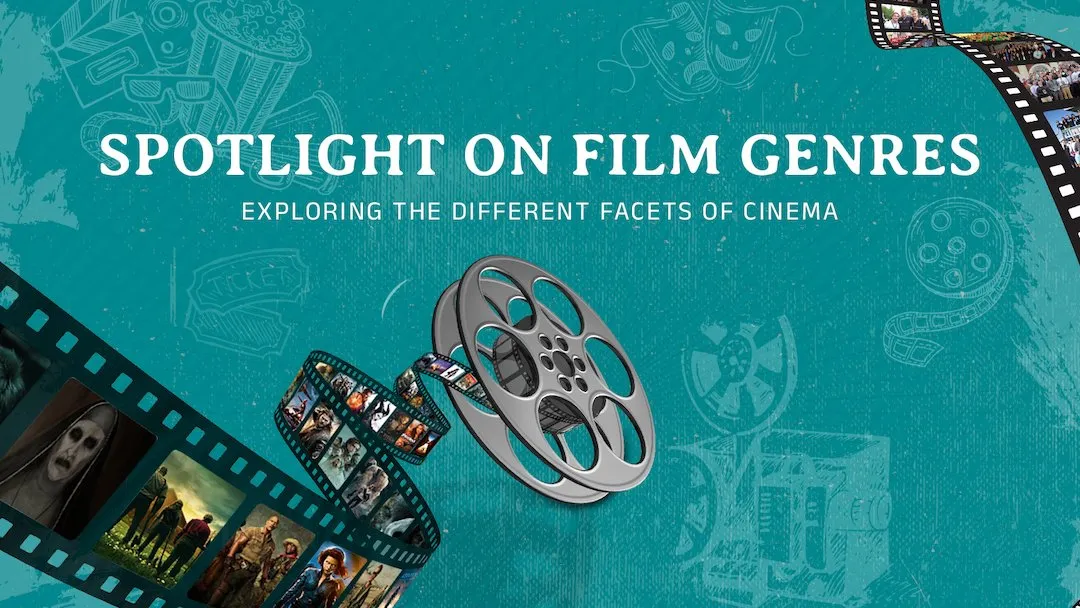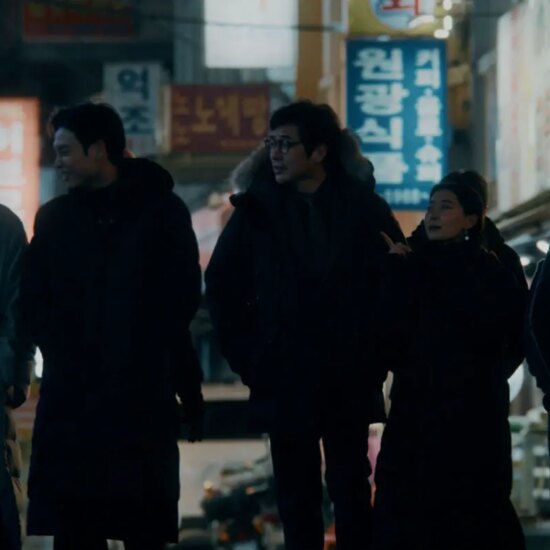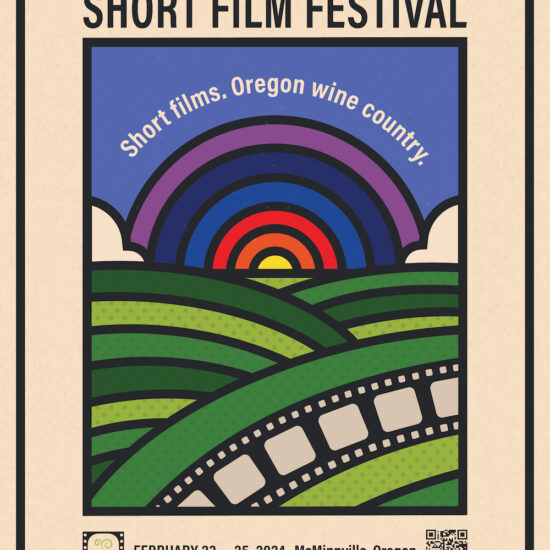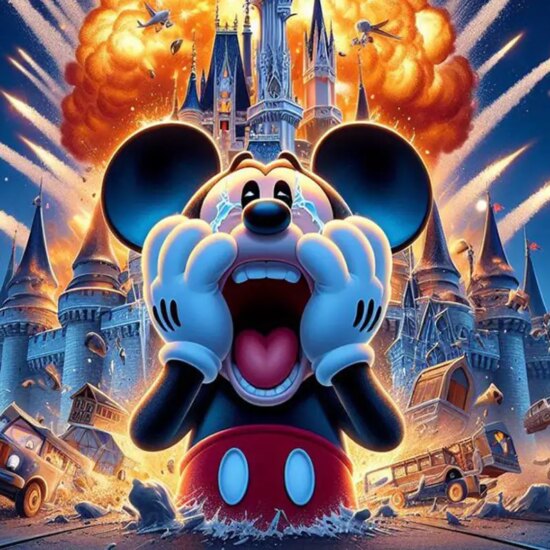
Cinema, is an art form that possesses a ability to transport us to diverse worlds, evoke a myriad of emotions, and boost our imagination. There are elements that shape our cinematic experiences, film genres hold a special place. They act as guiding stars, leading us through the vast expanse of movies and aiding us in navigating the diverse array of stories and themes available. In this blog, we delve into the captivating world of film genres, casting a spotlight on their significance and embarking on a journey to unravel the myriad facets that make them an indispensable part of the cinematic tapestry.
Understanding Film Genres
Film genres are akin to threads that intricately weave through the fabric of cinema, offering distinct flavors, tones, and narrative structures. They enable filmmakers to cater to different tastes and preferences, giving rise to a wide range of cinematic experiences. Whether we crave adrenaline-pumping action, uproarious laughter, gripping dramas, or heartwarming romances, there exists a genre tailored to satiate every cinematic longing.
Understanding and appreciating film genres provides us with deep insights into the art of storytelling. We come to recognize the purposeful creative decisions made by filmmakers to evoke emotions and engage viewers. Additionally, film genres play a vital role in shaping our expectations as an audience, enabling us to anticipate and immerse ourselves in narratives that align with our personal preferences.
Definition and Significance of Film Genres
Film genres can be best defined as categories or classifications that group movies based on shared themes, storytelling techniques, settings, and character archetypes. These genres provide a framework for filmmakers to shape their narratives and aid audiences in discerning the type of movie they can expect. The significance of film genres lies in their capacity to convey certain expectations to viewers, empowering them to make informed choices regarding the films they watch. Genres also serve as a shared language among filmmakers, critics, and enthusiasts, fostering discussions and analyses of movies based on common characteristics.
Evolution of Genres Over Time
Film genres have evolved and transformed over the course of cinematic history. In the early days of cinema, genres were more straightforward and limited in number, encompassing distinct categories such as Westerns, romantic comedies, and melodramas. However, as filmmaking techniques advanced and societal changes influenced storytelling, genres began to intermingle and hybridize. Novel genres emerged, such as science fiction and action-adventure, while existing genres expanded to encompass subgenres and experimental variations. The evolution of genres mirrors the dynamic nature of cinema, adapting to cultural shifts and technological progress to offer fresh and captivating narratives.
Role of Genres in Shaping Audience Expectations
Film genres play a pivotal role in shaping audience expectations. By identifying the genre of a movie, viewers can anticipate certain elements, themes, and storytelling conventions. For instance, in an action film, audiences expect exhilarating sequences, high-stakes conflicts, and intense physicality. Genres provide a framework for filmmakers to engage with their audience, enabling them to tap into familiar tropes and narrative structures while leaving room for creativity and innovation. Understanding genres empowers audiences to actively engage with the cinematic experience, appreciating the choices made by filmmakers and evaluating how a movie aligns with or defies genre conventions. Films can also be a great tool if you want to engage with a wider audience and Free Spiderman Movie theme template is perfect example for it.
Mainstream Film Genres
Action Films
Action films are renowned for their high-energy sequences, adrenaline-pumping stunts, and intense physicality. They often feature daring heroes, formidable villains, and an unyielding pursuit of excitement.
Characteristics and Popular Examples
Action films captivate viewers with their quick-paced plots chock-full of tension, adrenaline, and action-packed set pieces. These films enthral viewers with their tense combat, thrilling chase scenes, and stunning special effects. Larger-than-life characters, pulse-pounding action scenes, and jaw-dropping visuals are hallmarks of renowned series like James Bond, Mission: Impossible, and Fast & Furious that keep audiences on the edge of their seats.
Impact on Culture and Audience Appeal
Action movies have a substantial impact on popular culture, influencing entertainment trends across various mediums. They often become cultural touchstones, with memorable characters and catchphrases ingrained in the collective consciousness. Action films possess broad audience appeal, attracting viewers of all ages who seek exhilarating escapism and high-octane entertainment. They provide an adrenaline rush, transporting audiences into a world of danger and adventure. Action heroes become aspirational figures, embodying bravery, resilience, and resourcefulness. The box office success of action movies demonstrates their enduring popularity, as audiences flock to theatres to experience the thrills and spectacle these films offer. Moreover, action movies possess the ability to transcend cultural boundaries, with their universal themes of heroism and triumph resonating with viewers worldwide.
Comedy Films
Comedy films have an unparalleled ability to brighten our spirits and evoke infectious laughter. They embrace the joys and absurdities of life, offering a delightful escape from the realities of the world.
Elements of Humor and Notable Comedies
Comedy films encompass a range of elements that elicit laughter, including clever wordplay, witty banter, physical comedy, situational irony, and impeccable comedic timing. These elements are skillfully woven together by filmmakers and performers to create moments of levity and joy. Timeless classics such as “Annie Hall,” “Some Like It Hot,” and “Airplane!” exemplify the artistry and craftsmanship behind comedic storytelling.
Different Subgenres and Comedic Performers
Comedy movies span diverse subgenres, catering to various comedic styles and sensibilities. These include romantic comedies (rom-coms), slapstick comedy, dark comedy, satire, parody, and screwball comedy. Each subgenre brings its own distinct flavor to the comedic landscape, offering audiences a wide spectrum of laughter-inducing experiences. Furthermore, comedy films are often defined by the performances of talented comedic actors and actresses who bring characters to life with their impeccable timing and comedic prowess. From the physical humor of Charlie Chaplin and Buster Keaton to the rapid-fire wit of actors like Jim Carrey and Melissa McCarthy, comedic performers contribute their unique charm to the genre, leaving audiences in stitches and creating memorable comedic moments on the big screen.
Drama Films
For movie enthusiasts who appreciates for the art of storytelling, dramatic films offer a captivating cinematic experience. These films has remarkable ability to explore complex emotions and tell stories with profound emotional depth. With their rich character development and engaging plots, they have the power to deeply engage viewers and leave a lasting impact.
Emotional Depth and Narrative Structure:
Dramatic films can evoke strong emotions in viewers and are fundamentally about creating an emotional connection with them. These films deal with universal themes like love, family strife, atonement, and personal growth, which helps the viewer identify with the characters. Dramatic films have traditionally emphasised the internal conflicts, social connections, and character development through a character-driven format. This tactic promotes introspection and a careful examination of the human condition, resulting in a profoundly moving movie experience.
Exploration of Human Experiences and Societal Issues:
Dramatic films highlight the complexities of human existence and important social issues. They touch on topics including identity, societal injustice, moral dead ends, and family relationships. By addressing these issues, dramatic films invite audiences to reflect on their own lives and consider the greater societal and moral repercussions portrayed in the plot. These films promote empathy, stimulate self-reflection, and meaningful debates about important societal and human concerns. They may be family dramas that showcases complex relationship dynamics or courtroom dramas that raise difficult moral and legal questions.
Romance Films
Romantic films artfully capture the very essence of human connection, passion, and love. These movies intricately explore the complexities of relationships, with a particular emphasis on the emotional odyssey undertaken by two individuals as they embark on the path of love or navigate the obstacles that confront them. The romance genre encompasses a diverse array of narratives, from heartwarming accounts to deeply poignant stories, all of which strike a profound chord within us, drawing upon our own personal experiences.
Depiction of Love and Relationships
Love and relationships take center stage in these movies, exploring the various aspects of interpersonal bonds. Romantic movies picturize the excitement of new love, the complexities in relationship, the pain of breakups, and the power of love. These films often highlight the romantic experience of falling in love, the thrill of romantic gestures, and the intimacy that accompany sharing one’s life with another. By showcasing the emotions and complexities of relationships, they also capture the happiness, challenges that love brings.
Iconic Films and their impact
The impact of romantic movies is significant, with many iconic films leaving an indelible mark on audiences worldwide. These cinematic gems have become cultural milestones, shaping our perception of love on the big screen.
Numerous legendary influences on viewers across the world. From timeless classics like “Gone with the Wind” and “Casablanca” to modern favorites like “The Notebook” and “Titanic,” these films have left an enduring mark on our collective consciousness. These romantic movies not just entertain us but also evoke powerful emotions.
Niche and Hybrid Film Genres
While mainstream film genres dominate the box office, there exists a vibrant world of niche and hybrid film genres that cater to more specific interests and push the boundaries of traditional storytelling. These genres offer unique and alternative cinematic experiences, often blending elements from different genres or catering to a niche audience.
Science Fiction Movies
Science fiction movies have long captivated audiences with their imaginative concepts and futuristic worlds. These films transport viewers to unexplored realms of possibility, pushing the boundaries of what is known and introducing them to futuristic technologies, alien civilizations, and mind-bending concepts.
Imaginative Concepts and Futuristic Worlds
Science fiction films are renowned for their ability to construct fantastical settings and ideas that push the boundaries of human imagination. These films take us to unrealistic world, from cosmic space excursions to apocalyptic futures. Whether it’s exploring space in films like “2001: A Space Odyssey” or imaginary futuristic societies in films like “Blade Runner,” science fiction enables filmmakers to push the boundaries of creativity and present audiences with captivating visuals and concepts that defy our current conceptions of reality.
Influence on Technology and Popular Culture
Science fiction films have had a significant impact on both popular culture and technology. Science fiction films often reflect ideas and notions that have influenced actual innovation. For example, “Star Trek” series introduced ideas such as communicators & touch-screen user interfaces, which later inspired the design of contemporary smartphones and tablets. Science fiction has influenced popular culture, with its hit films like “Star Wars” and “The Matrix” inspiring fan bases. These films are now deeply ingrained in our culture and have affected art, literature, and fashion trends.
Horror Fiction Movies
Horror films have a special knack for making us jump out of our chairs and feel goosebumps down our spines. These flicks expertly exploit our worst phobias while building a terrifying environment. Let’s talk about the development of terror and suspense as well as the various subgenres and cult classics that make up the horror genre.
Creating Fear and Suspense
The art of evoking terror and suspense is at the core of horror films. Horror films elicit a variety of feelings, from spooky anticipation to heart-pounding panic, through brilliant storyline, evocative photography, and unsettling sound design. These films skillfully play with our psychological fears, using elements like darkness, jump scares, supernatural entities, or psychological torment to elicit a visceral reaction from the audience. By immersing viewers in a world of suspense, horror films engage our senses and keep us hooked, captivating us with the unknown and the terrifying.
Different Subgenres and Cult Classics
The horror genre encompasses various subgenres that caters to different audience tastes and preferences. From supernatural, psychological, slasher films to creature features, each sub-genre used different style to scare and storytelling techniques.
For instance, supernatural horror films like “The Exorcist” delve into the realm of the supernatural, exploring demonic possessions and haunted houses. Whereas, Psychological horror, delves into the depths of the human psyche, often blurring the lines between reality and illusion, its perfect example are movies like “Psycho” and “The Shining.” Cult classics such as “The Texas Chainsaw Massacre” and “Night of the Living Dead” have garnered dedicated followings and become emblematic of the genre’s impact and lasting influence.
Conclusion
In conclusion, every genre contributes its own distinct flair, enthralling audiences and having a lasting influence on culture. Film genres offer a rich tapestry of emotions and themes that continue to attract viewers worldwide, from side-splitting hilarity and action-packed thrills to sombre studies of the human experience.
Priyanshu is a copywriter who loves to tune into what makes people tick. He believes in presenting his ideas with flair and wit, which has made him an expert at standing on stage and charming the pants off of any audience he’s faced with. Priyanshu lives for learning as much as he can, so if you ever need help understanding something – just ask!














